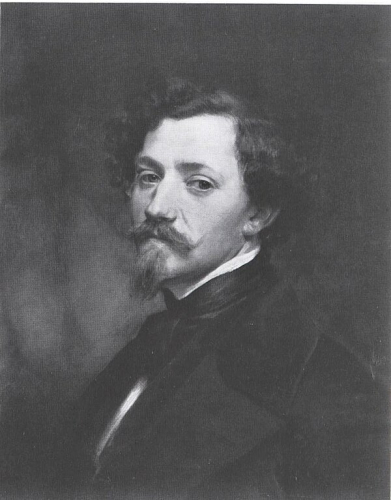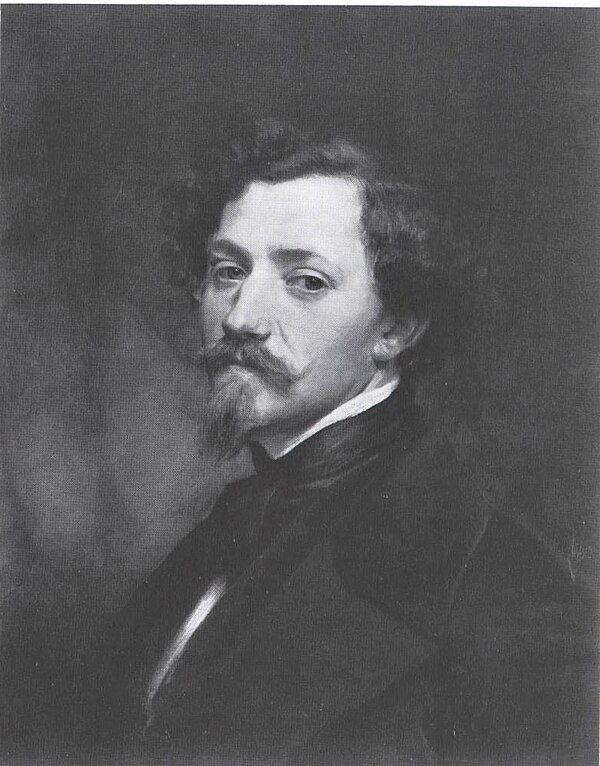Louis Coblitz
( 1814-1863 )
Biography


A German painter and draftsman, Louis Coblitz was born in Mannheim into a family whose paternal lineage originated from St. Goar on the Rhine. His father, Andreas Coblitz (1783–1851), and his mother, Elisabeth Schadt of Groß-Gerau, belonged to the educated bourgeoisie of the region.
From an early age, Coblitz showed artistic promise. He received his first instruction from Theodor Leopold Weller(1802–1880), the court painter established in Mannheim.
In 1835, supported by a stipendium granted by the Grand Duchy of Baden, he entered the Academy of Fine Arts in Munich, where he studied for about a year. Returning to Mannheim in 1837, he settled in the district known as R 3 1 “im Quadrat” and worked primarily as a portraitist.
In 1841, Coblitz left Germany for Paris to further his training. He exhibited at the Paris Salons from 1842 to 1846, presenting works such as Le Premier pas (1842), Jeune fille arrosant des fleurs (1842), L’attente (1843), Jeune mère(1844), and Il Bambino (1844).
In 1845, he was commissioned to travel to Hampton Court (London) to copy six large historical portraits for King Louis-Philippe I’s collection. Among the subjects were Ferdinand Álvarez de Tolède, Duke of Alba (after Moro), John Churchill, 1st Duke of Marlborough (after Kneller), Thomas of Savoy-Carignan (after Van Dyck), Edward VI, Robert Dudley, Earl of Leicester (after Holbein), and a version of William Shakespeare (after an English School painting).
After his stay in London, Coblitz returned to Mannheim in 1847, continuing his work as a portraitist for the local bourgeois and aristocratic elite. In 1856, he traveled to Italy, and between 1861 and 1862, he stayed in Dirmstein(Palatinate) with his friend Gideon von Camuzi, producing several landscape views, including Ansicht von Dirmstein(1862).
In his later years, suffering from a pulmonary illness, he was granted a studio and lodging in the west wing of Mannheim Palace by Grand Duke Frederick I, where he lived with his two sisters. He died there on April 19, 1863, and was buried in the Main Cemetery of Mannheim, where a new funerary monument was erected in 1984.
Coblitz distinguished himself through his mastery of portraiture — the precision of his drawing, the refinement of his modeling, and the elegance of his poses — as well as his taste for genre painting and landscape. His Parisian period exposed him to academic trends and the French Salon style, while his career in Mannheim rooted him within the German artistic context of his time. His royal commissions for Versailles demonstrate both erudition and institutional recognition.
Although his work has remained relatively obscure in the major narratives of art history, it provides a valuable insight into the mobility of German artists in the mid-nineteenth century and illustrates the cross-currents of style linking Germany, France, and England.
No artwork matches
93400 Saint-Ouen sur Seine